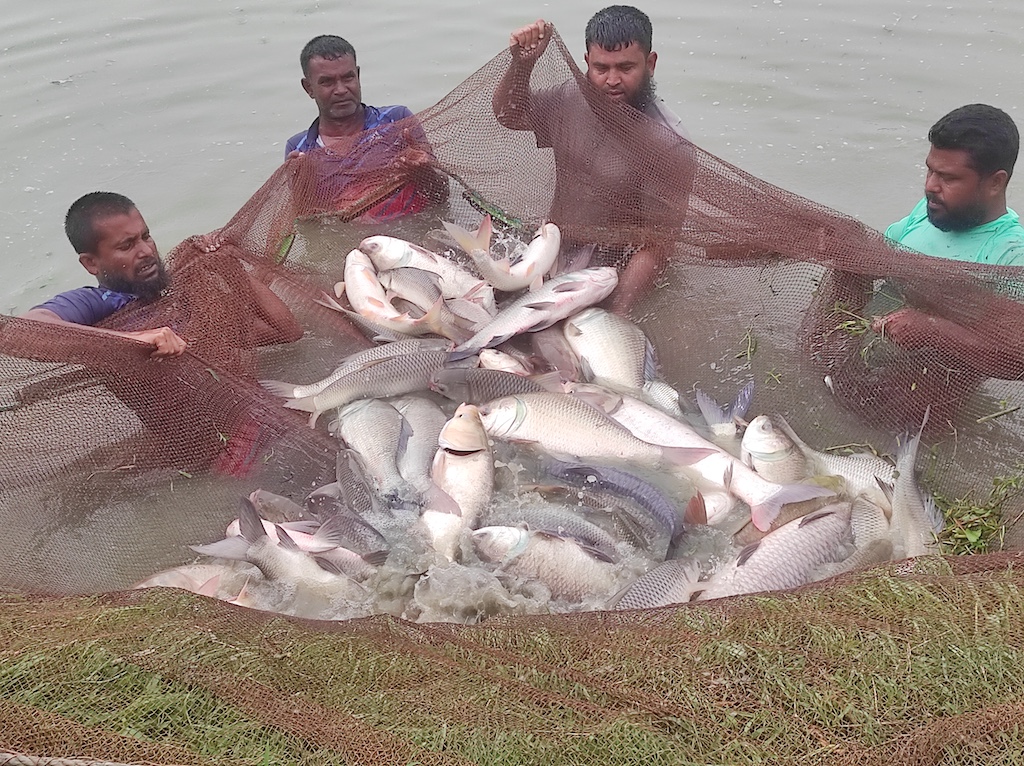
By Alaina Dismukes
From 2020 to 2023, the Feed the Future Innovation Lab for Fish funded research to establish a cryogenic sperm bank to preserve Indian major carp and exotic carp sperm for commercial aquaculture production in Bangladesh. A research team led by scientists from the Bangladesh Agricultural University and Louisiana State University effectively established a cryogenic sperm banking of carps to address existing broodstock quality problems in the aquaculture industry contributing to significant losses in carp hatcheries. Although the Fish Innovation Lab activity ended, the research team continued to actively engage in scaling their research efforts in the local context. They are now supporting the government and private hatcheries in developing brood banks, translating their wealth of knowledge from the research activity to further increase aquaculture production in Bangladesh.
"Through our collaborative research, the Department of Fisheries (DoF) submitted a proposal to the Bangladesh Planning Commission, and received their approval to set up sperm repositories in two big hatcheries, one in Jenaidah and another in Sirajganj District, Bangladesh," said Md. Rafiqul Islam Sarder, lead principal investigator for the Fish Innovation Lab’s Cryogenic Sperm Banking activity. "They will use the sperm repositories for conducting breeding in another 20 hatcheries located in different areas of the country, and we assured them we are happy to provide technical support as needed, using our expertise in the subject."
The research team visited DoF headquarters in Dhaka to collaborate on a plan to set up two sperm repositories at Kotchandpur Central Fish Hatchery Complex in Jenaidah District and Nimgachi Fish Project (Revenue) in Sirajganj District.
"We initially worked with DoF using their 14 fish breeding and nursery facilities in four regions of the country with direct supervision and cooperation from hatchery managers and produced seeds using cryopreserved sperm and reared them to broods," he said. "The cryopreserved sperm-originated seeds showed higher growth compared to those produced with hatchery-origin fresh sperm. These outputs inspired the hatcheries to set up sperm repositories in their own facilities through approval of the project from the Ministry of Planning in Bangladesh."
In these two hatcheries, there are many ponds along with fish breeding and nursing facilities to draw from and successfully undertake the technique of cryopreservation to create healthy broodstock.
"We did not work in these hatcheries during our Fish Innovation Lab activity’s study period, but we visited the hatcheries several times and know their operations," Sarder said.
"The quality of broodstocks has deteriorated in many hatcheries due to inbreeding, hybridization, and negative selection, but using cryopreserved sperm of good specimens can improve the situation—as already proven by our research. The new sperm repositories will play an important role in improving the aquaculture industry in Bangladesh."
Published June 26, 2024
